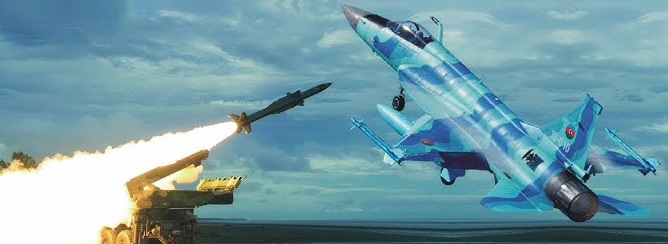SOURCE: AFI


As three decades of hostilities between Armenia and Azerbaijan continue to simmer, a new phase in the conflict is taking shape, marked by the introduction of advanced air defense systems and fighter jets. Armenia has recently placed significant orders for India’s Akash 1S air defense interceptor missile system, while Azerbaijan has bolstered its air capabilities with JF-17 fighter jets developed by Pakistan and China. These acquisitions signal a potential shift in the military balance between the two nations, with both seeking to enhance their strategic advantages.
The Akash 1S air defense system, developed by India’s Defence Research and Development Organisation (DRDO), is poised to become the backbone of Armenia’s air defense network. Armenia’s decision to acquire the Akash 1S is a key part of its strategy to replace its aging Soviet-era air defense systems, which are now considered obsolete in the face of modern aerial threats.
The Akash system is known for its ability to intercept a variety of aerial targets, including fighter jets, drones, and cruise missiles, within a range of 25-30 km. It is equipped with a highly capable 3D phased array radar and is designed to track and engage multiple targets simultaneously. The upgraded Akash 1S variant includes enhanced radar tracking, better missile guidance systems, and increased precision, making it a formidable shield against enemy aircraft.
While exact details regarding the size of Armenia’s order remain undisclosed, speculation suggests that Armenia has purchased around 15 batteries of the Akash 1S system. Each battery consists of six launchers, and each launcher is armed with three missiles. This large acquisition indicates Armenia’s intention to cover a wide range of its airspace and significantly boost its ability to defend key infrastructure and military assets.
On the other side of the conflict, Azerbaijan has taken delivery of JF-17 Thunder fighter jets, co-developed by Pakistan Aeronautical Complex (PAC) and China’s Chengdu Aircraft Corporation (CAC). The JF-17 is a lightweight, multirole fighter that has proven to be an affordable and capable option for countries looking to modernize their air forces without the steep costs associated with high-end fighter jets.
The JF-17 is equipped with advanced avionics, beyond-visual-range air-to-air missiles, and precision-guided munitions. Its agility and speed make it a potent platform for both air superiority and ground attack missions. With the ability to carry a variety of armaments, including PL-12 and SD-10 air-to-air missiles and C-802 anti-ship missiles, the JF-17 represents a new level of offensive capability for Azerbaijan.
The acquisition of the JF-17 by Azerbaijan is particularly significant as it enhances the country’s ability to conduct precision strikes and counter Armenia’s ground-based air defenses. The introduction of this aircraft into the region may embolden Azerbaijan’s military posture, particularly in contested areas.
The impending confrontation between Armenia’s Akash air defense system and Azerbaijan’s JF-17 fighter jets introduces a new layer of complexity to the ongoing conflict. The Akash system, with its ability to detect and neutralize incoming aerial threats, poses a direct challenge to Azerbaijan’s new fighter jets. However, the effectiveness of the Akash system will depend on how well Armenia integrates it into its existing defense network and whether it can maintain operational readiness during sustained conflict.
The JF-17’s air-to-surface missile capabilities like e Ra’ad ALCM allow it to strike from a distance, potentially avoiding the engagement envelope of the Akash system. However, the 3D phased array radar and quick reaction capabilities of the Akash 1S give Armenia a fighting chance to neutralize incoming JF-17 strikes before they can inflict significant damage.
Another critical factor will be how both nations use electronic warfare (EW) systems. Modern conflicts are often won not just by missiles and jets but by the ability to jam radars, disrupt communications, and blind adversary sensors. Both Armenia and Azerbaijan are likely to employ these tactics to either enhance the effectiveness of their systems or degrade the opponent’s capabilities.
As both nations continue to modernize their arsenals, the Akash air defense system and JF-17 fighter jets may become defining elements in any future confrontation. Armenia’s investment in India’s Akash system highlights its commitment to strengthening its defensive capabilities, while Azerbaijan’s purchase of JF-17s underscores its focus on achieving air superiority.
The introduction of India’s Akash 1S air defense system into Armenia’s military arsenal and Azerbaijan’s deployment of JF-17 Thunder fighter jets sets the stage for a new chapter in the decades-old conflict. Both nations are seeking to strengthen their military capabilities through advanced technologies, and the clash between these systems will likely shape the future of air combat in the region.